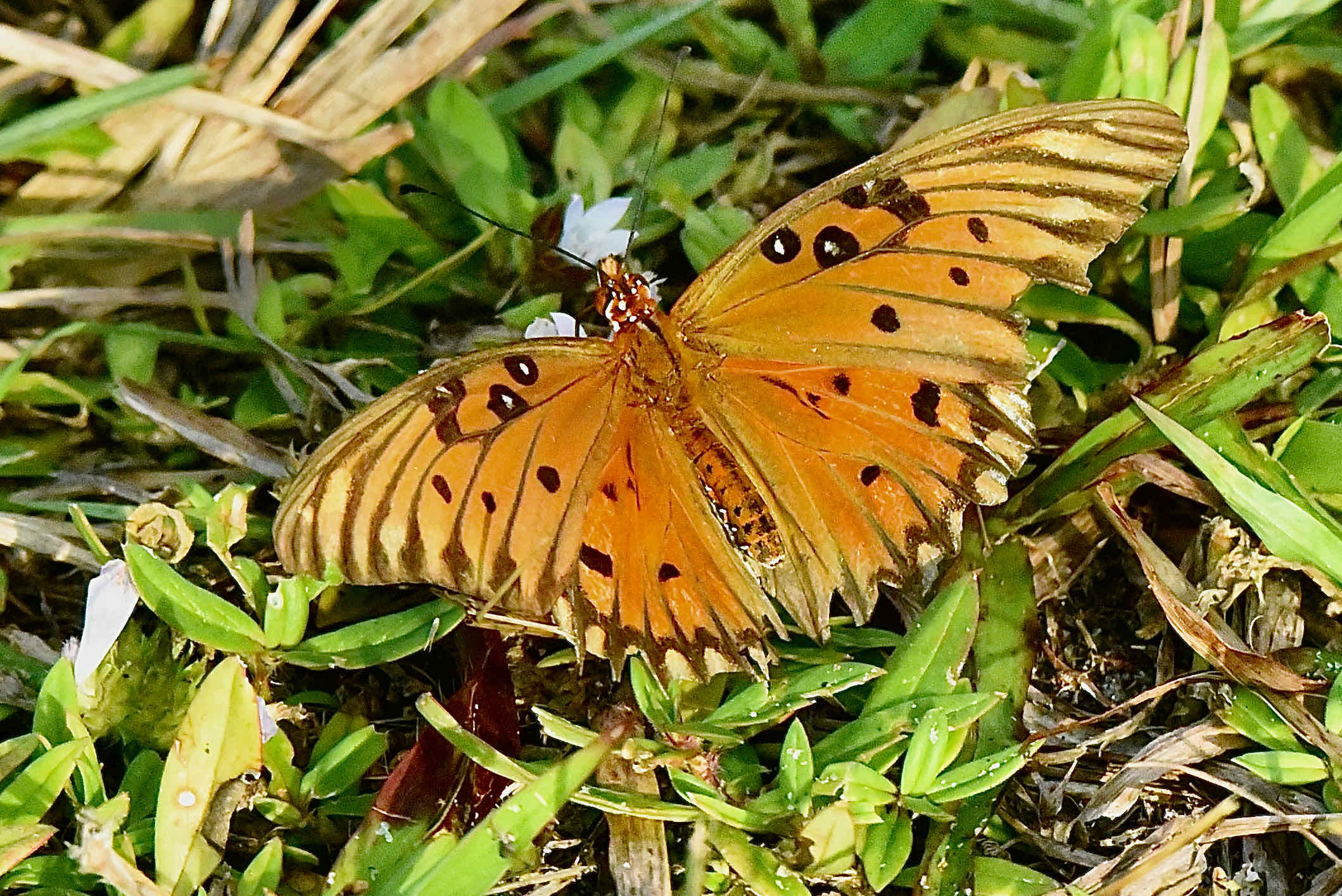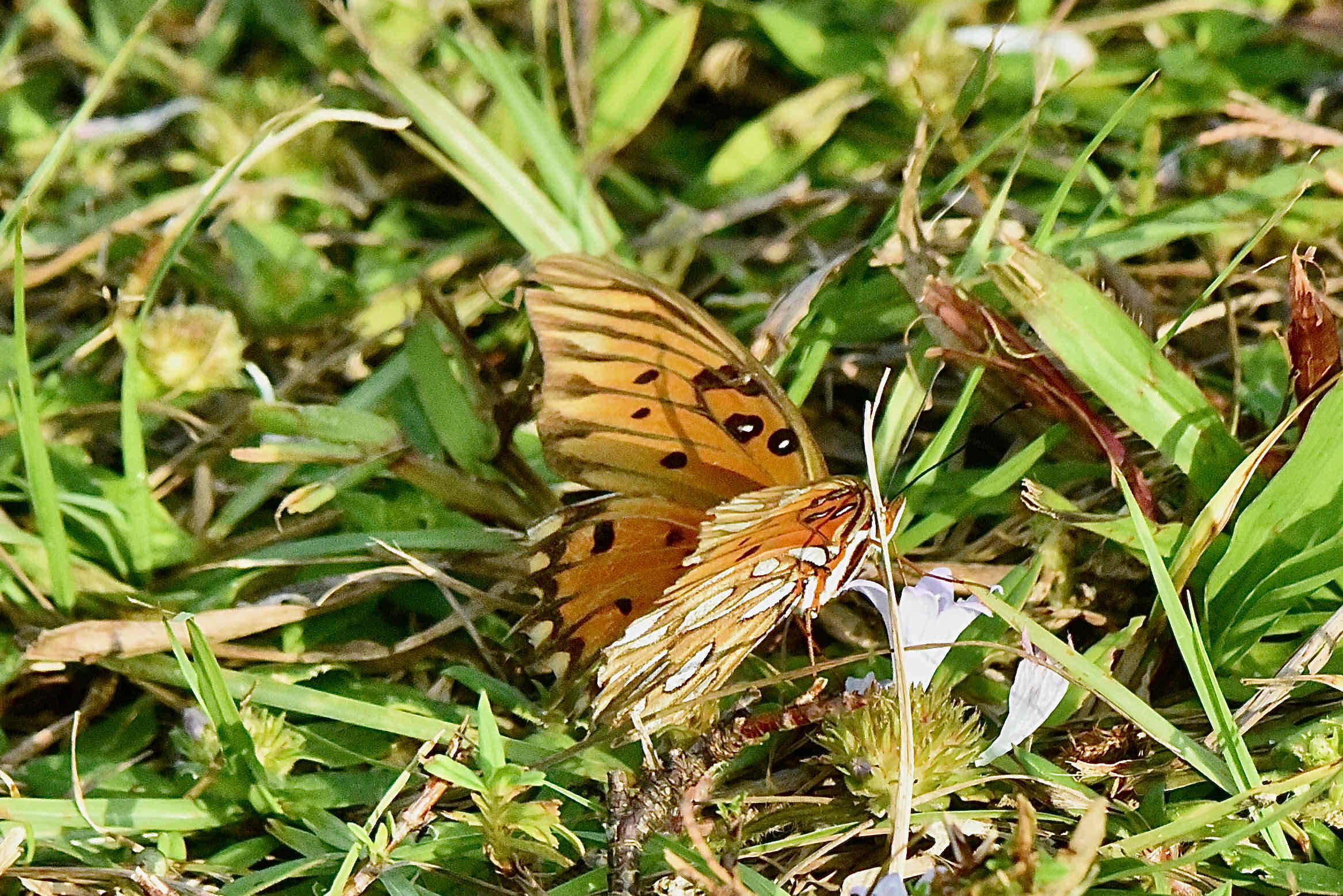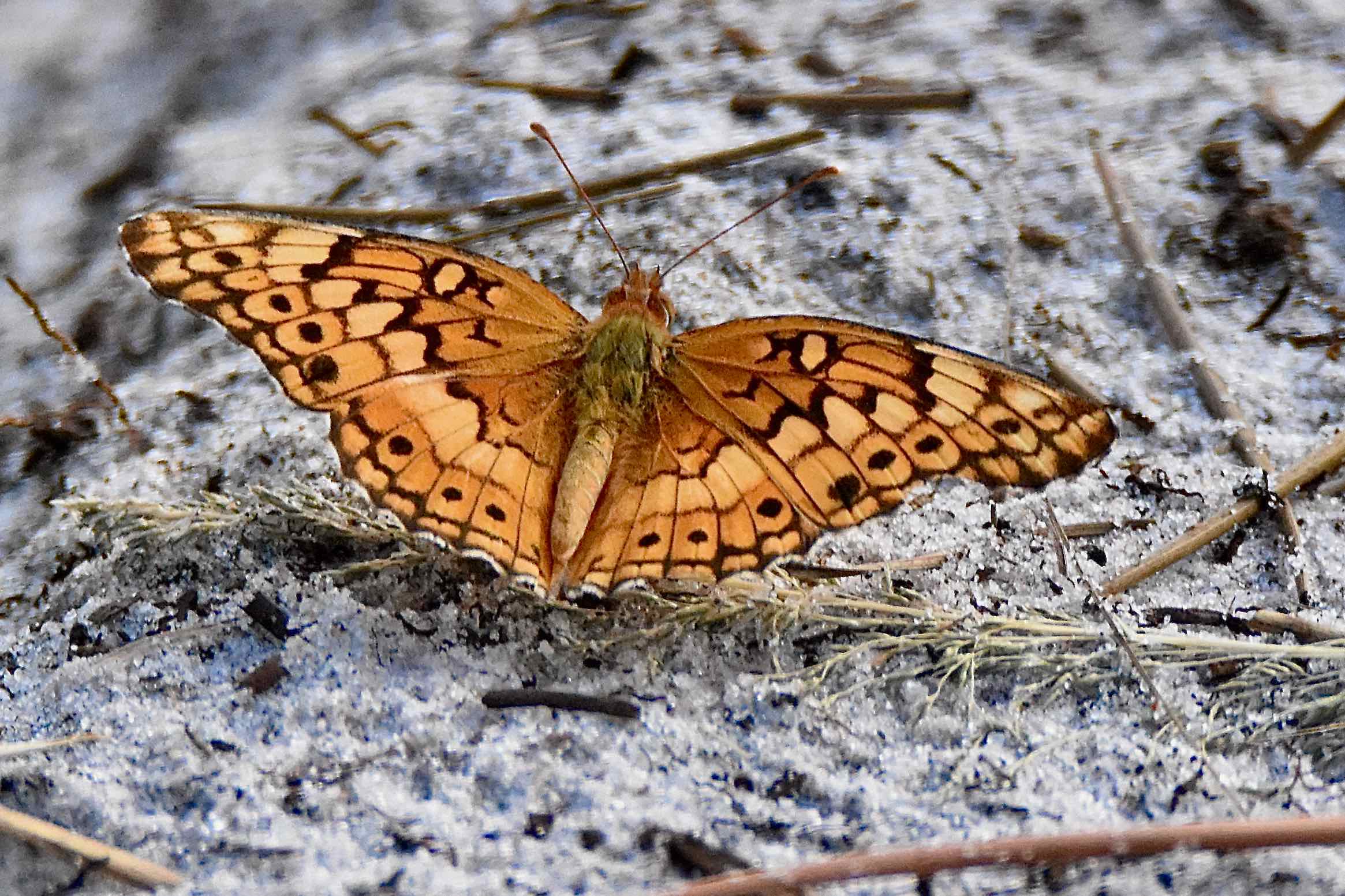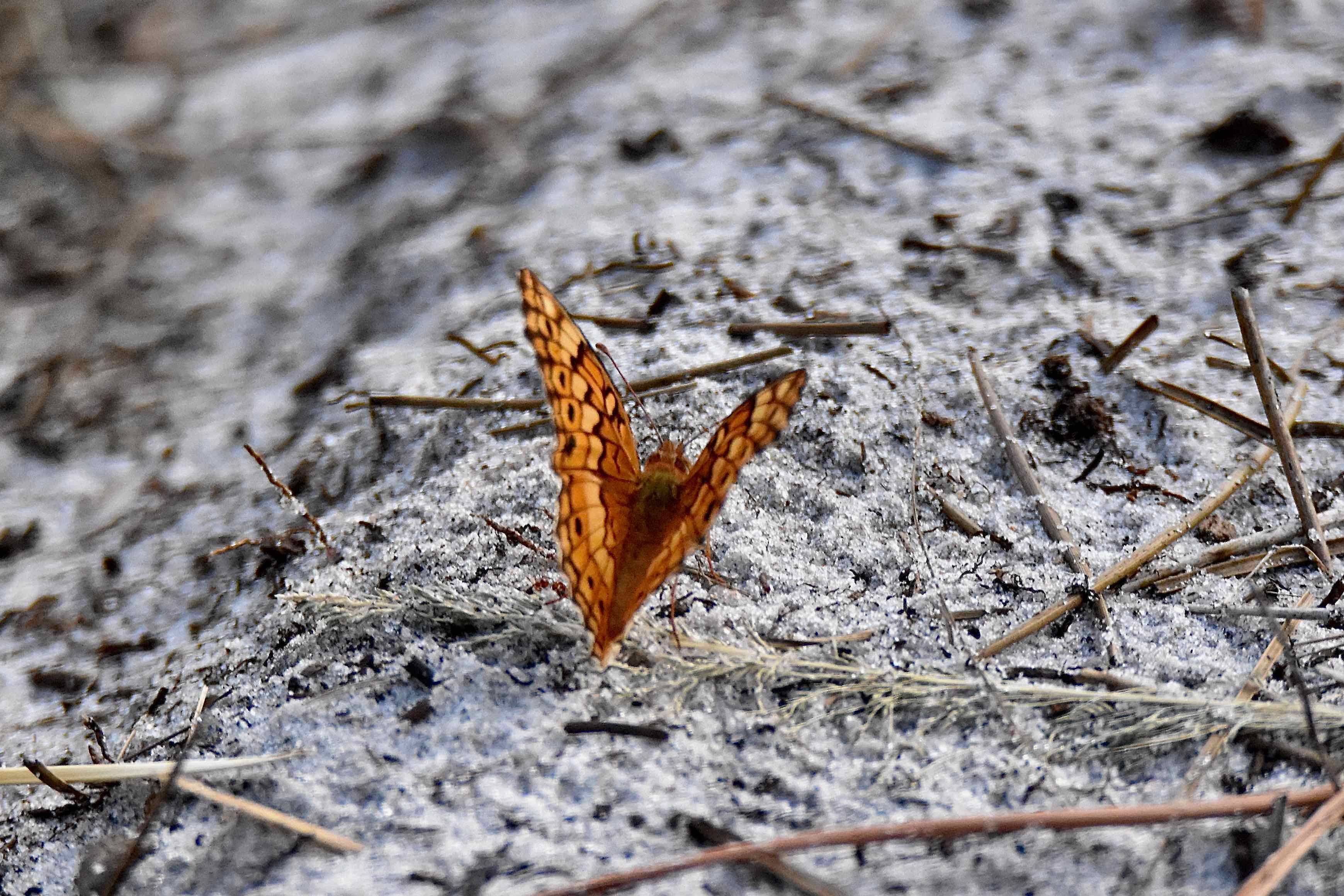
Variegated fritillary butterfly, photographed at Loxahatchee National Wildlife Refuge, Boynton Beach, Palm Beach County, in December 2021.
This is a butterfly with a familiar look. You know it, or think you know it the first time you see it, but another glance tells you it’s something different after all.
We’re talking about the variegated fritillary butterfly, Euptoieta claudia, cousin to the much more commonly seen gulf fritillary, aka Dione vanillae (formerly Agraulis vanillae).
The variegated isn’t rare by any means. Just less conspicuous compared to its bright orange cousin. It also tends to be on the skittish side. In fact, its genus name derives from the Greek word, euptoietos, meaning easily scared.
Variegated fritillary butterflies are medium sized as butterflies go, with a wingspan between 1.75 and 2.25 inches long. Like their gulf cousins, they sport two different looks, depending on whether they’re viewed from above or below. From above, they’re various shades of a brownish orange, with a series of black lines and spots along the trailing edges of their wings. From underneath, they’re a mottled mix of browns and grays that create sort of a quilted pattern.
The mix is similar enough to the gulf fritillary but different enough at the same time that you recognize the variegated fritillary as a likely relative the first time you spot one. Or at least, that was our experience.
Variegated larvae — the caterpillars — are reddish with black and white lateral lines.
Variegated fritillary butterflies take to open habitats — fields, meadows and roadsides — pretty much any place with few trees.
Their range extends pretty much from the southern half or third of the United States from California to Florida, south through Mexico, Central America and South America to Argentina. However, they do wander, and have been spotted as far north as parts of New England and even into Canada’s Northwest Territories.
Variegated fritillaries tend to fly low — note that all the photos on this page show the variegated on the ground — with males spending their time patrolling for the ladies of the species. They’re not picky eaters, taking nectar from a fairly wide range of plants, including milkweeds, clovers, dog bane, and tickseeds (Asteraceae species). The larvae tend to be a little more selective but not by much. Their favorites include violets, passionflowers and purslane.
Variegated fritillaries have three broods in the northern part of their range, four in the south. They are active year-round in South Florida by our observations.
There are something like 100 species of fritillary butterflies worldwide, of which 30 are found in North America. But only the variegated and the gulf are found in Florida. According to the U.S. Forest Service, the name, fritillary, derives from the Greek fritillus, meaning chessboard or dice box, a reference to their checkered pattern.
Fritillaries are members of the “subfamily” Heliconiiae, which includes two other notable butterflies found in Florida, the Julia and zebra longwing butterflies. The zebra happens to be Florida’s state butterfly.
They are members of Nymphalidae, the brush-foot butterfly family.
Loxahatchee National Wildlife Refuge Also at Royal Palm Beach Pines Natural Area



